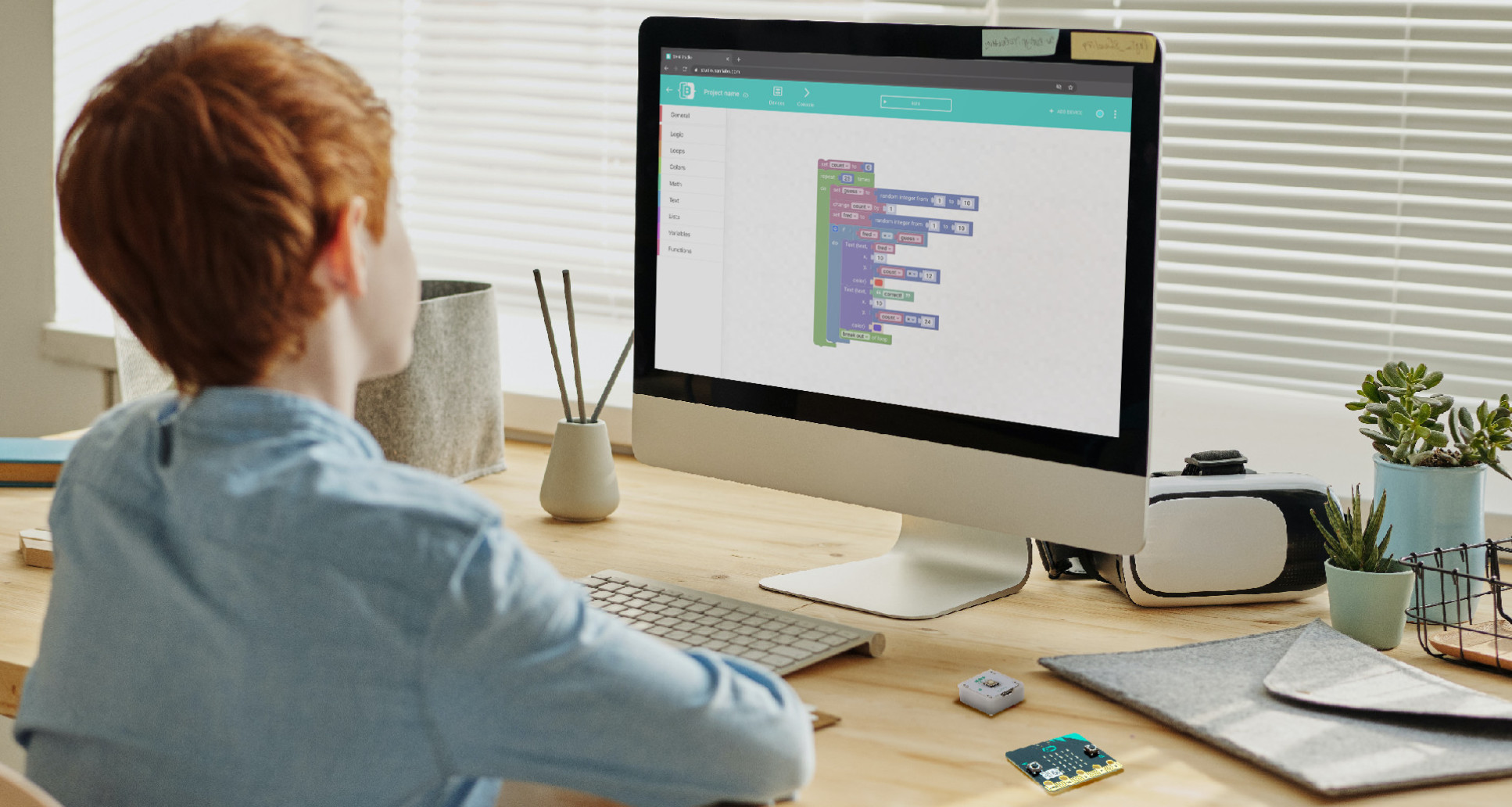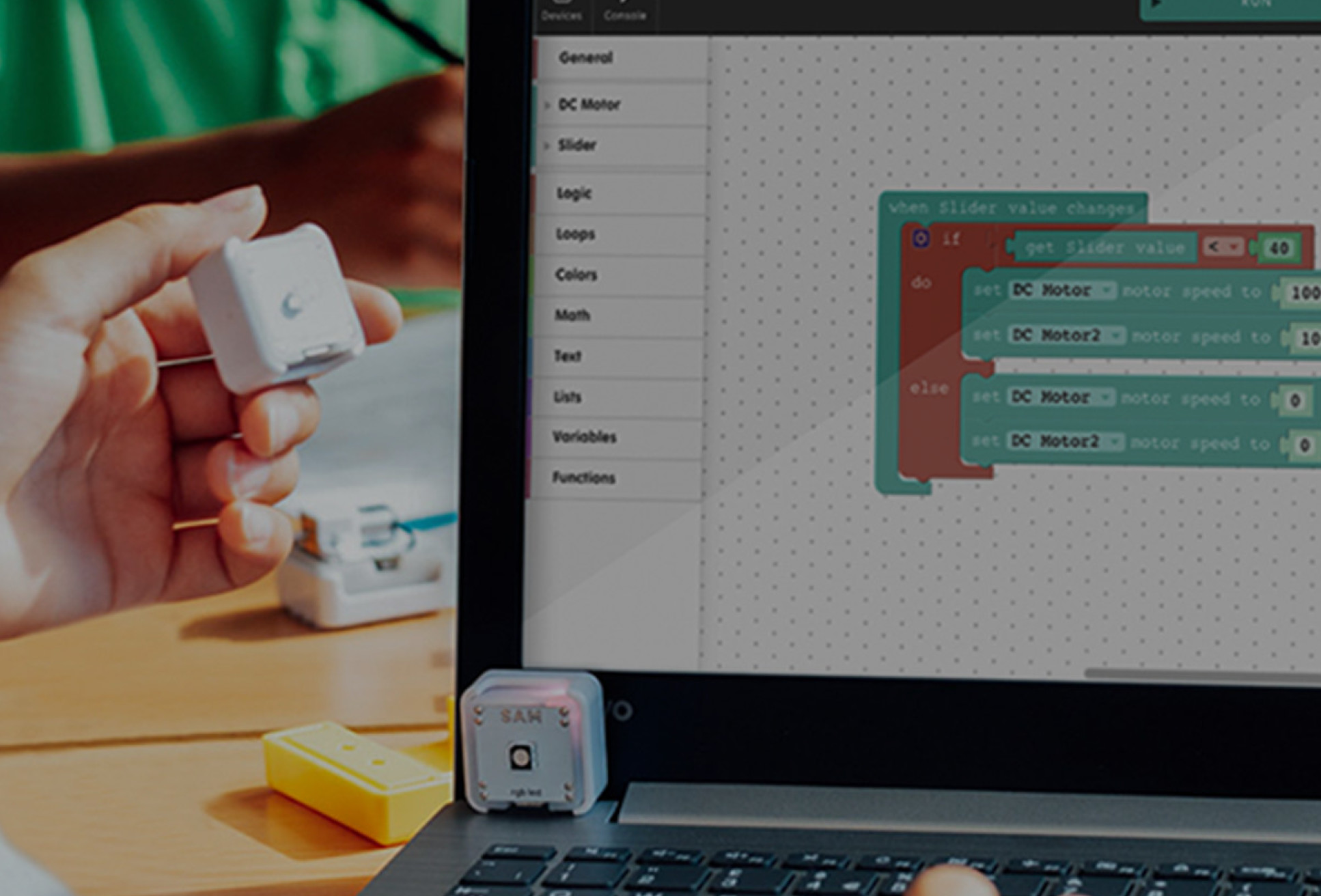

SAM Labs, founded by Imperial graduate Joachim Horn, provides hands-on coding and technology teaching resources to schools across the world.
SAM Labs offer innovative courses to teach STEM (Science, Technology, Engineering and Mathematics), the arts and coding with confidence. Their easy-to-use courses enable students to conduct experiments, solve problems and design prototypes.
With their curriculum courses, the team hope to increase student engagement, improve teacher confidence and reduce teacher workload. Their courses are aimed at both specialist and generalist teachers, and their kits include practical curriculum-aligned courses, Bluetooth connected hardware blocks and interactive software.
The aim is to help students master computational thinking - taking a complex problem and breaking it down into a series of small, more manageable problems that can be understood by a computer.

Combining science and art
SAM Labs’ STEAM (Science, Technology, Engineering, the Arts and Mathematics) course for ages 5-11 brings real-life science concepts to life through a character-led narrative and physical computing. Students are guided to innovate systems which power prototypes and create solutions. From a smart greenhouse to a drag parachute, a seed dispersing squirrel to a working model of erosion, students can consolidate their skills by combining science and art.
Their Learn to Code course for ages 8-14 brings computing concepts and programming to life with increasing complexity and depth of understanding through a character-driven narrative. In each lesson, students use and develop their coding and physical computing skills to help cyber security officer Sam to complete her missions.
Their Makerspaces course for ages 5-16 builds a students’ capacity to respond and acclimatise to the increasingly complex and varied number of skill sets required for the future workforce.
Each course pack includes a lesson plan, which sets out the knowledge, skills and key learning points, lesson slides to present a visual, interactive guide to students, a handout for students to consolidate and reflect upon their learning, and a step-by-step guide to the building the system.
Building blocks
The team also aim to put the future of the Internet of Things in more people’s hands. 
Their construction kits consist of wireless building blocks to empower budding inventors to create anything they can imagine. The blocks, which wirelessly communicate with each other via Bluetooth, include motors, lights, switches or buttons. The SAM Labs software app visually represents the physical blocks on the screen and allows users to drag and drop simple lines to connect them, with no programming experience required.
This allows users to easily make everyday objects part of the ‘Internet of Things’, hardware devices connected to the internet through embedded sensors, software or other technologies for the purpose of connecting and exchanging data with other devices and systems.
Rapidly growing field
The SAM Labs courses are currently being used by 5,000 schools worldwide, including 3,000 in the US. Coding is a rapidly growing field and Joachim says it is a valuable skill that can also help to teach other subjects.
Joachim graduated from an MEng in Mechanical Engineering in 2013. During his time at Imperial, he set up the Imperial College Design Collective, which has now merged with Imperial Design Engineering Society.
Image credits: SAM Labs
Article text (excluding photos or graphics) © Imperial College London.
Photos and graphics subject to third party copyright used with permission or © Imperial College London.
Reporter
Joanna Wilson
Communications Division

Contact details
Tel: +44 (0)20 7594 3970
Email: joanna.wilson@imperial.ac.uk
Show all stories by this author
Leave a comment
Your comment may be published, displaying your name as you provide it, unless you request otherwise. Your contact details will never be published.




Comments
Comments are loading...